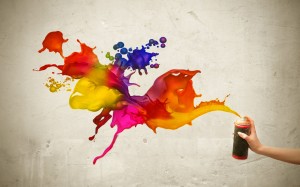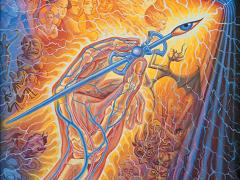Wisdom for Your Week: Unleashing the Symphonic Creativity of Every Unique Self
The page you are trying to reach is part of our Great Library Stacks & Archives. If you already signed up for our FREE Great Library card, please log in to access this content.
If you are not yet a Library Card owner, you can sign up to get access.
Enlightenment of Fullness — Yetzir and Yetzirah, Part III
The page you are trying to reach is part of our Great Library Stacks & Archives. If you already signed up for our FREE Great Library card, please log in to access this content.
If you are not yet a Library Card owner, you can sign up to get access.
Wisdom for Your Week: Marc Gafni and Rob McNamara in Dialogue over Unique Self
The page you are trying to reach is part of our Great Library Stacks & Archives. If you already signed up for our FREE Great Library card, please log in to access this content.
If you are not yet a Library Card owner, you can sign up to get access.
Enlightenment of Fullness — Yetzir and Yetzirah, Part II
The page you are trying to reach is part of our Great Library Stacks & Archives. If you already signed up for our FREE Great Library card, please log in to access this content.
If you are not yet a Library Card owner, you can sign up to get access.
Imitation or Originality: Distinction between Unique Self and Ego #3
The page you are trying to reach is part of our Great Library Stacks & Archives. If you already signed up for our FREE Great Library card, please log in to access this content.
If you are not yet a Library Card owner, you can sign up to get access.
Wisdom for your Week: John Mackey and Marc Gafni Discuss Creativity and Unique Self
The page you are trying to reach is part of our Great Library Stacks & Archives. If you already signed up for our FREE Great Library card, please log in to access this content.
If you are not yet a Library Card owner, you can sign up to get access.
Enlightenment of Fullness — Yetzir and Yetzirah, Part I
Looking for more on the wisdom tradition that aligns you with your deepest creativity? In a three-part excerpt from the long version of Soul Prints, Marc Gafni writes that we can transform and raise our passion and artistic creativity into a powerful drive for the sensual and the holy, realizing that, in a redeemed world, they are one and the same. As long as our spirituality remains vapid and empty, we indeed need to repress the more primal, creative passion, lest it overwhelm us. Primal passion unrealized is soul print or Unique Self destiny unrealized.
You can view Part II of this essay in full by clicking here>>
You can view Part III of this essay in full by clicking here>>
Yetzer and Yetzirah: Raising the Primal Sparks of Creativity and Passion
by Dr. Marc Gafni
from “The Way of the Dragon“ in the long Soul Prints.
Part I.
In biblical spirituality, information about God is relevant for one reason only. Information about God is information about us. We are commanded to be little Gods – to imitate God. Just as God stood at the abyss of darkness and said let there be light, so are we commanded to stand at the abyss of our darkness and say let there be light. A little bit of light dispels so much of the darkness. Further, just as God is a creator – creating, sculpting, painting, composing a gorgeous physical world – so, too, are we invited to create, to sculpt, to paint, and to make music.
Mozart, Bach, Schubert, Rembrandt, and Michelangelo created. And yet, creativity is still viewed as suspect by much of the religious community. Art per se and artists to be sure are suspected of being amoral at best and, more probably, immoral. Acting, painting, sculpture, song are held in both high esteem and moral disdain. Why? The answer, which we have already introduced in our earlier discussion, emerges from an understanding of the deep linguistic and conceptual relationship between the biblical myth terms Yetzer and Yetzirah. Yetzirah means creativity; Yetzer is best translated as primal instincts, including but not limited to libido (Freud), the drive for power (Adler, Nietzsche), and the need for meaning (Frankel). In the Hebrew language, which is the ultimate source of all biblical myth thought, Yetzer and Yetzirah are the same word, linked etymologically and conceptually. The point: I cannot create without connecting deeply to my most primal instincts.
In my earlier twenties, I attended for a short time a prestigious drama workshop in Greenwich Village in New York. When we would be preparing for a murder scene in a play, we would do exercises to help us access the murderous rage lurking untapped in the corners of our souls. I cannot create drama about murder without unlocking the murderer in myself. To create anything – and certainly for the ultimate creation, the creation of myself – I need to be able to access the most primal passions of my being. Herein lies the attraction and the danger. My primal instincts when not integrated into my fully developed self are often not channeled properly and can potentially destroy worlds. Witness Germany. My mother, who was there, told me almost every day as I was growing up that the same people who gassed Jews in the morning, listened, with great primal passion, to Mozart in the evening.
In response to this psychological reality, Biblical myth spirituality taught: “Who is heroic, he who is (Kovesh) conquers his Yetzer.” And if the price is also to sacrifice certain forms of creativity, so be it. Better to be moral, holy, and not creative, than creative and immoral.
And yet having to choose between the primal passion of creativity and morality is far from satisfying!!
Visit centerforintegralwisdom.org for more wisdom teachings from Dr. Marc’s writings and the other teachers of the Center for World Spirituality.
Introducing “Storytelling with Cheryl Rae Fidelman”
The page you are trying to reach is part of our Great Library Stacks & Archives. If you already signed up for our FREE Great Library card, please log in to access this content.
If you are not yet a Library Card owner, you can sign up to get access.
Unique Self Dialogue: Ken Wilber & Marc Gafni, Part 6
The page you are trying to reach is part of our Great Library Stacks & Archives. If you already signed up for our FREE Great Library card, please log in to access this content.
If you are not yet a Library Card owner, you can sign up to get access.
Marc Gafni on Post-Postmodern Art: A New Article in Parabola Magazine
 By Marc Gafni
By Marc Gafni
Artist Claudia Kleefeld is not the first person to see the symbol of the spiral as being a portal to a vision of a coherent cosmos. She is original in that she is a first-rate, old-master-style artist with thirty years of training, who paints the spiral as an expression of an Eros of certainty that asserts the utter meaningfulness, depth, and order of the cosmos. Kleefeld’s paintings emerge from her own opened eye of the spirit and speak directly to the higher spiritual intuition of her viewers. Finally, Kleefeld is unusual in that she is part of an emergent form of art, which seeks to reveal the enchantment of a cosmos ”” a cosmos that is good, true, and beautiful.
I am delighted to present an article which celebrates the work of Claudia Kleefeld, one of the brightest shining lights in the universe of art today. My new article, “Post-postmodern Art: A Return to Belonging,” is now published in the latest issue of Parabola Magazine.
The Weekend of Loving Outrageously
The page you are trying to reach is part of our Great Library Stacks & Archives. If you already signed up for our FREE Great Library card, please log in to access this content.
If you are not yet a Library Card owner, you can sign up to get access.
Love in Action: Unique Self – Unique Projects
The page you are trying to reach is part of our Great Library Stacks & Archives. If you already signed up for our FREE Great Library card, please log in to access this content.
If you are not yet a Library Card owner, you can sign up to get access.
Three Steps to God: Awakening Your Evolutionary Creativity… by Dr. Marc Gafni
The page you are trying to reach is part of our Great Library Stacks & Archives. If you already signed up for our FREE Great Library card, please log in to access this content.
If you are not yet a Library Card owner, you can sign up to get access.
Creativity as Unique Expression – Dialogue Dr. Marc Gafni with Alex Grey

Alex Grey has become one of our most iconic and immediately-recognizable artists, and somewhat of a poster-boy for a genuinely integral approach to art, life, and spirituality. Many of his prolific works have been featured and reproduced all over the world, ranging from magazine covers, party flyers, and blotter acid to high-profile album covers for Tool, David Byrne, the Beastie Boys, Nirvana, and Michael Hedge.
In this discussion, Alex shares his own personal path to Unique Self, describing how his creative process is directly informed by an intimate realization of radical and unqualifiable emptiness, combined with his unique and irreducible perspective of the world. Alex talks about how his passion to create springs from an almost Bodhisattva-like yearning to serve, and how this devotion to service is one of the defining characteristics in the emergence of Unique Self.
Only by cultivating a path for ourselves that honors the paradoxical simultaneity of emptiness and perspective can we discover the real potential of our artistic gifts. In Alex’s case, this path has allowed him to fully and fluently express a deeply personal vision of the universal””illuminating a spiritual anatomy that is common to all of us, but uniquely recognized and rendered through Alex’s distinct perspective.
Whether you are an artist trying to carve out your own creative path, or just a casual admirer of beauty in its many effulgent forms, you will not want to miss this intimate and insightful discussion!
Alex Grey, a renowned visionary and spiritual artist and author of The Mission of Art. In the foreword to The Mission of Art, Ken Wilber stated: “Alex Grey might be the most significant artist alive. One of his most well known works is the Sacred Mirrors series of 21 life-sized paintings, taking the viewer on a journey through body, mind, and spirit. The Sacred Mirrors present the physical and subtle anatomy of an individual in the context of cosmic, biological and technological evolution. After painting the Sacred Mirrors, he applied this multidimensional perspective to such archetypal human experiences as praying, meditation, dying, kissing, copulating, pregnancy, birth and nursing.
Diane Musho Hamilton combines decades of work in in conflict resolution with depth of experience in sitting meditation. She often says that “mediate” and “meditate”, share the same purpose: to bring what is divided or in dispute into harmony. In mediation, one brings disputing parties to agreement. In meditation, one brings body, speech, and mind into coherence with the environment. With extraordinary warmth, depth and insight, she encourages us to work with our differences, while discovering our fundamental unity. Diane is the author of Everything is Workable: A Zen Approach to Conflict Resolution, (2013, Shambhala Publications), The Zen of You and Me: A Guide to Getting Along with Just About Anyone (March 2017, Shambhala Publications), and soon to be released, Compassionate Conversations: How to Speak and Listen from the Heart, in-press with Gabriel Wilson and Kimberly Loh (May, 2020, Shambhala Publications.)
